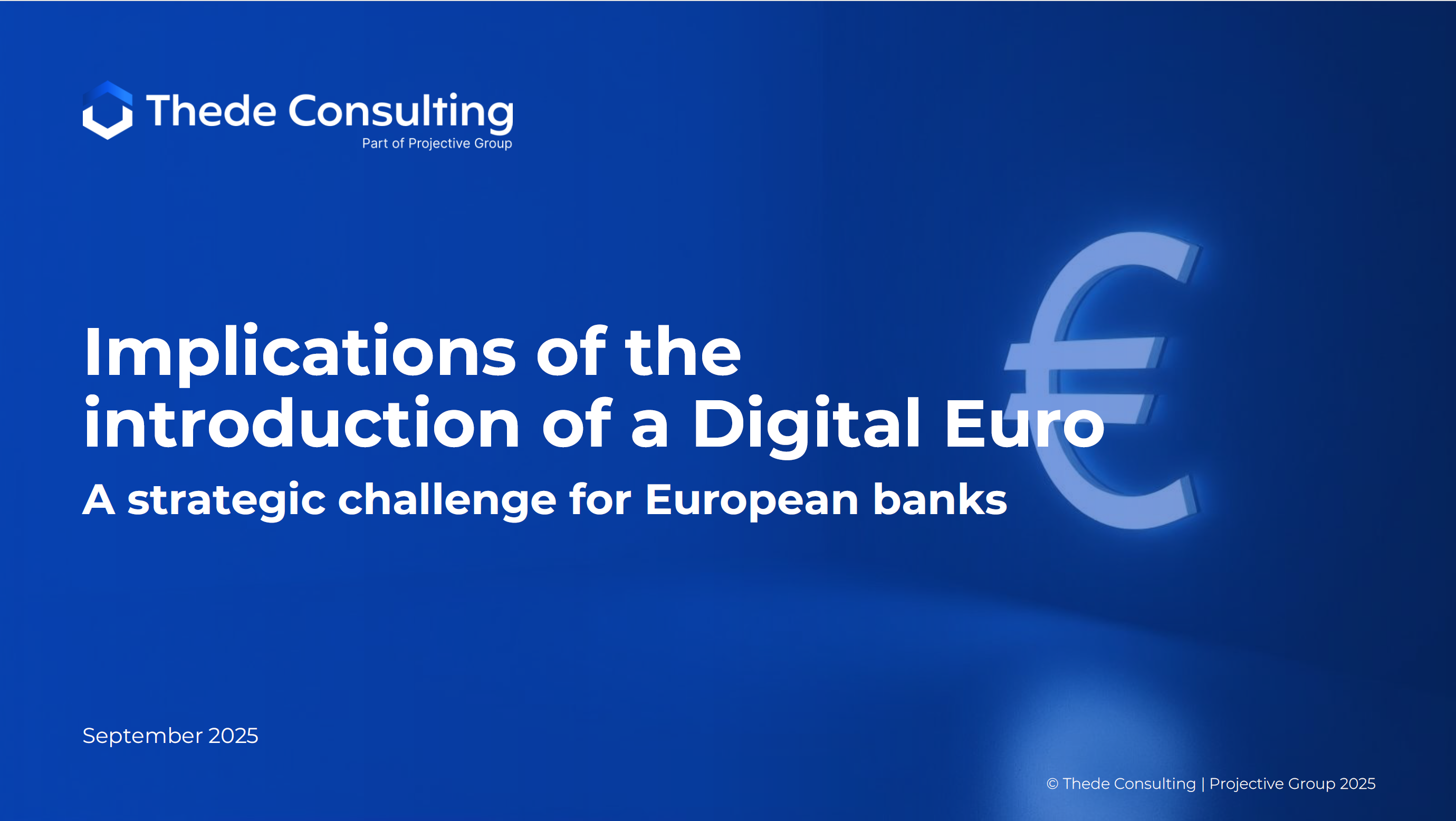The digital euro will fundamentally transform the European payments landscape. For banks and payment service providers, this means: now is the right time to prepare strategically for the upcoming changes. In our teaser paper, we highlight the key elements of the European Commission’s legislative proposal, outline the strategic challenges for financial institutions, and show how banks can successfully implement the digital euro.
ECB Decision on the Digital Euro: October 2025 as a Milestone
The European Central Bank (ECB) has announced that it will decide on the introduction of the digital euro in October 2025, following the completion of the current two-year preparation phase. Although a concrete launch date has not yet been set, banks and payment providers should not underestimate the potential impact of an implementation that, according to the ECB, could begin as early as 2028. As a legal currency, the digital euro will have to be offered mandatorily—both on the issuing and acquiring sides. Waiting or hesitating is therefore not a viable strategy.
Our teaser outlines why banks must prepare now for the digital euro and how they can position themselves strategically within their existing payment strategies.

Regulation of the Digital Euro
Key Challenges for Banks
Introducing the digital euro will entail significantly higher effort for banks than previous payment innovations. Similar to international card schemes such as Visa, Mastercard, or Wero (from the European Payments Initiative), the implementation and operation of the digital euro will be governed by an extensive rulebook. In addition, participating institutions will need to set up a new technical infrastructure, including the transfer of euro to digital euro and vice versa. They will also need to maintain separate digital euro accounts, increasing administrative complexity.
However, banks will not be able to pass these costs directly to their customers. According to the European Commission, so-called “basic services”—including account maintenance, euro-to-digital-euro transfers, and digital euro transactions—must be offered free of charge. The proposal also foresees the issuance of physical payment cards to prevent the exclusion of non-digital users.
Revenue Models and the Risk of Margin Pressure
Of course, the legislator must ensure the economic attractiveness of the digital euro for all market participants. However, this attractiveness will be strongly influenced by regulatory measures. The following transaction-based revenues will be generated for E-Commerce and POS transactions:
- Revenues on the issuer side (banks): These will primarily stem from the Inter-PSP Fee – an ad valorem fee paid by the acquirer to the customer’s bank, comparable to the interchange fee. This fee is expected to be regulated by the ECB, similar to the interchange fee.
- Revenues on the acquirer side: Revenues will mainly be generated through the Merchant Service Charge (MSC) – an ad valorem fee paid by merchants to their acquirers. Unlike current payment schemes, the MSC will also be subject to regulation.
The regulated nature of the Inter-PSP Fee and the Merchant Service Charge creates the risk of a “race to the bottom,” which could, in the long term, lead to significant margin pressure and declining transaction revenues on both the banking and acquirer sides.
For further information on the cost and revenue implications of the digital euro, especially from a banking perspective, please refer to our teaser paper.
Our Teaser also Covers:
- Key legislative aspects and their implications for banks
- The impact of the digital euro on issuer revenues and potential strategic responses
- An illustrative business case for issuers
- How banks can position themselves and the benefits of such positioning
- How a strategy and implementation project for banks could be structured
Inaction Is Not an Option
Delaying preparation for the digital euro puts issuers and acquirers at risk of non-compliance with legal requirements, cannibalization effects from an unaligned payment strategy, and the danger of falling behind competitors.
Since banks and acquirers will be obliged to participate in the digital euro, they should define their strategic approach now. Our analysis highlights the key criteria that banks need to evaluate and weigh when shaping their individual digital euro strategy, including aspects such as cost leadership, customer centricity, and time-to-market.
Now is the time to set the strategic course. We would be pleased to engage in a personal discussion to exchange ideas and explore the next steps together.

Jens Hegeler

Dr. Carlos Nasher

David Skrobski


